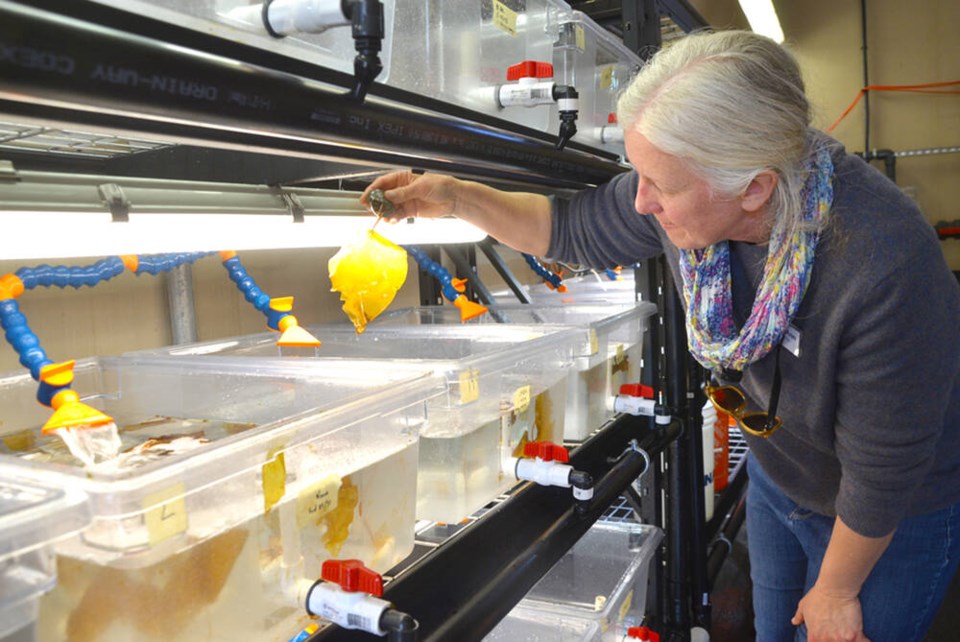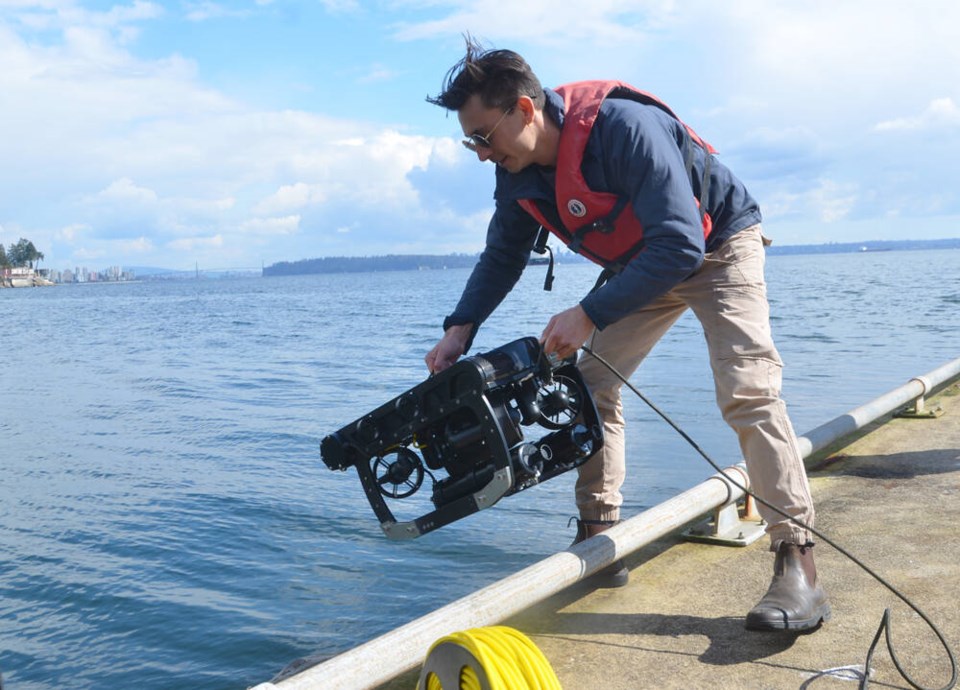In the battle to maintain a habitable planet, you couldn’t ask for a much better ally than carbon-capturing, biodiversity-nurturing kelp.
But the fast-growing seaweed is disappearing from the ocean floor, driven largely by human activity.
Today, scientists in West Vancouver’s are looking for ways to replant what has been lost, a process the Ocean Wise Conservation Association has dubbed seaforestation.
The work could prove to be of “planetary significance,” Ocean Wise executive vice-president Carlos Drews told gathered dignitaries at the official launch of the West Coast’s first ever kelp nursery last week.
“We’re bringing back a patient that is in the emergency room to a healthy state, so that we can all benefit from all the services that the oceans provide for humankind,” he said.
“We want to restore the kelp that has been lost. We want to maximize the environmental returns from kelp, the biodiversity returns and the social returns to the peoples that are rightful custodians of much of the coastline in sa¹ú¼Ê´«Ã½ and in other parts of the world.”
Nobody knows exactly how much of the world’s kelp forests have been lost, but scientists estimate it’s between 40 and 60 per cent. In the waters around Tasmania, 95 per cent of the kelp forests are gone for good because the warming ocean is no longer a livable habitat for them, Drews said.
In the coastal waters around British Columbia, kelp faces another threat — over-predation by sea urchins whose populations surged when humans removed their natural predators.
A little kelp from their friends
Seaweed farming dates back at least three centuries, Drews said, and there are other efforts around the world to restore kelp forests. But the field of study is relatively new and there are many gaps in our understanding of which methods will work best.
Inside a shed at the Marine Drive lab, scientists have recreated the ideal conditions to produce millions of “baby kelp” and are looking for the most effective ways to have them thrive in their natural habitat.
There are a few techniques that have been tried, including “seeding” lines of rope in hopes their offspring will gain purchase on the rocky substrate below.
Much of the work being done in West Van involves “green gravel” — “toddler” kelp bonded to pebbles that can be placed by divers.
Another, still largely secret, technique that is showing great potential is being experimented on, in which they attempt to “glue” baby kelp to rocks.
The nursery in the West Vancouver lab has the capacity to produce millions of kelp babies, Drews said, which can be transplanted around the coastal waters of sa¹ú¼Ê´«Ã½
There is already a plantation on the floor of Burrard Inlet, which they can keep an eye on with an underwater drone. Just last month, the group laid a kilometre of “restoration line” around Prince Rupert.
Drews has seen for himself how “urchin barrens,” as they’re now known, can be turned into thriving undersea forests. A recent trial with 100 metres of green gravel in Rainy Bay northeast of Bamfield worked a bit slower than hoped, but the results were impressive, Drews said.
“We found a kelp forest. It was three metres tall.… There were sunflower sea stars, there was octopus, there was urchins, there was fish and everything,” he said. “This technique works.”

Super-conservation solution
When it’s left undisturbed, the benefits kelp offers are manifold and the potential is massive, Drews said.
Kelp captures carbon and uses it to grow faster than any other plant on the planet. When the fronds die, some will wash up on the beach and decompose, putting that carbon back into the atmosphere, but much of it drifts down into the deep abysses of the ocean, where the carbon becomes sequestered in the sediment for eternity.
“sa¹ú¼Ê´«Ã½ is blessed in that sense with these deep canyons and deep fjords being relatively close to the coast where the kelp is,” Drews said.
A kelp forest is a cradle of biodiversity, creating habitat for keystone species including herring, salmon, sea otters, seals, sea stars and urchins.
Kelp also offers a buffer against ocean acidification, which is being driven by climate change.
And a healthy kelp forest will dampen the force of wave action before it arrives on land, which reduces erosion and damage to coastal infrastructure.
“Kelp is this formidable super-conservation solution,” Drews said.
Part of the research now being done seeks to quantify exactly how much biomass can be created, how much carbon can be sequestered and how much the water’s Ph can be moved back toward a healthy level as “seaforestation” happens.

Growth industry
At the kelp nursery in West Vancouver, they have a goal of replanting 5,000 hectares of kelp forests in five years, but replanting a hectare here and there isn’t a solution, at least not on a global level.
As the research accumulates and breakthroughs are discovered, Drews said the lab’s work can be scaled up to an industrial level and new nurseries can be established closer to where they are needed around the world.
Eventually, Drews foresees individual communities and the private sector launching their own seaforestation initiatives, either out of corporate social responsibility or because of mandates to achieve carbon neutrality.
Much of the seed money (pun intended) for the West Van kelp nursery came from TELUS and Vancity.
“The roadmap is there. We can make it work. We know what it will look like,” Drews said. “It’s there where we see that beautiful combination of going to scale with something of planetary significance, and that’s what seaforestation stands for.”
The World Kelp Alliance, meanwhile, has a goal of restoring one million acres of undersea forest, an entirely reachable goal if the promise of the West Vancouver lab delivers.
“The restoration of ocean health is everybody’s business,” Drews said.


